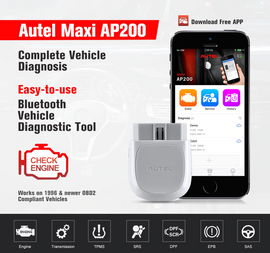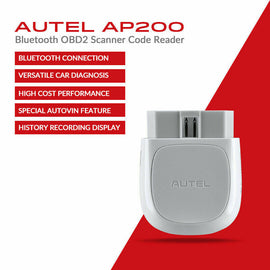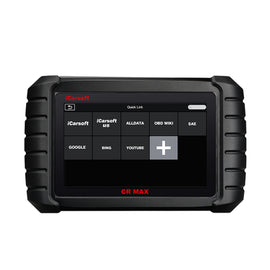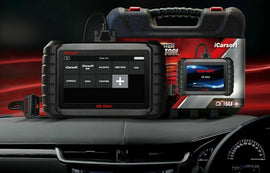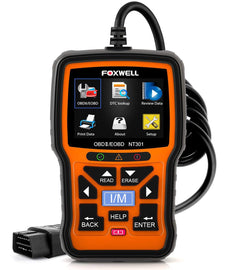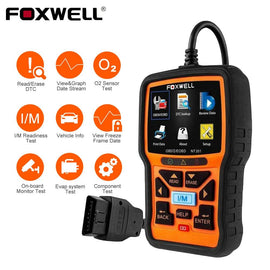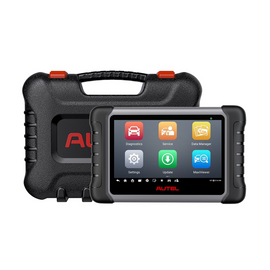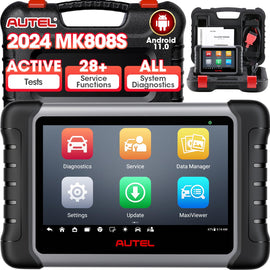Modern cars are complex machines equipped with onboard computers that monitor and control various systems, including fuel injection and emissions.
When an issue arises under the hood, your car will often alert you with a warning light, most commonly the dreaded "check engine" signal. But what does that mean in reality?
In this case, a vehicle scanner may be your best friend.
Knowing how to utilise one can save you time, money, and guesswork, so it's essential for both car owners and enthusiasts.
What Is a Vehicle Scanner and Why Is It Important?
A vehicle scanner sometimes referred to as an OBD2 scanner, is a portable or app-based gadget that interfaces with the onboard diagnostic system (OBD-II) of your car. When something goes wrong, this system records error codes, also known as Diagnostic Trouble Codes (DTCs), based on data gathered from multiple sensors and modules.
You can access these codes using the best car diagnostic tools to determine the underlying cause of the issue, whether it's a minor one, such as a loose gas cap, or a more serious one, like a misfiring cylinder.
Step-by-Step: How to Use a Vehicle Scanner for Engine Fault Codes
So, how to use the OBD2 scanner? Here are the steps to follow:
-
Locate the OBD2 Port
Usually found to the left and beneath the steering column are OBD2 ports. To find yours, you may need to squat down and use a flashlight, as some are tucked back quite far. The OBDII port is a trapezoid-shaped, 16-pin connector. Remember to turn off the engine.
-
Plug in the Scanner
There are both wired and wireless OBD2 scanners. If it’s wired, you’ll plug your device’s cord into the OBD2 port. If it’s wireless, there's typically a dongle that plugs into a port to communicate with your device.
-
Turn Your Vehicle On
While some OBD2 scanners operate independently, others require power from your car's battery. To find out if you need to turn on your car in order to use your OBD2 scanner, consult your owner's manual. To use an OBD2 scanner, you will typically need to turn on the power but leave the engine running.
While many OBD2 scanners will automatically identify your car's information, some may require you to enter it manually. You might be required to enter your vehicle identification number (VIN) or just the year, make, and model of your car.
Your VIN can usually be found on the driver's side dashboard or on a sticker inside the driver's side door; however, you'll need to open the door to view it.
-
Initiate The DTC scan
When the car is powered on, your car scanner may turn on automatically; otherwise, you will need to press a button. When everything is prepared, find the menu item to start a scan or check diagnostic trouble codes. If you are experiencing difficulties, refer to the user manual for your scanner to learn how to complete this task.
This feature should be easily accessible with the majority of OBD2 scan tools. Many only need one button to start DTC scans.
DTC codes typically come in two varieties: pending and active. Each type of code can be viewed using different menu options on certain scanners.
-
Interpret the Codes
A string of letters and numbers represents a diagnostic trouble code. For instance, "P0457" is the engine trouble code for a loose gas cap. Using a search engine to look it up online is the fastest way to determine the meaning of a DTC. More sophisticated diagnostic scanners can decode and interpret the code for you.
In a DTC, the initial letter may be P, B, C, or U. This letter identifies the specific part of your car that is causing the issue.
Types of Vehicle Scanners: Choosing the Right One
Not every vehicle diagnostic tool is made equally. Basic codes can be read and cleared by entry-level models, which are perfect for home users. Professional-grade scanners, on the other hand, offer ABS/SRS diagnostics, live data, freeze frame information, and emissions readiness.
When searching for the best car diagnostic scan tool for Australian cars, take into account features like:
-
All car models and makes sold in Australia are compatible.
-
Syncing with mobile apps via Bluetooth or Wi-Fi.
-
Display of sensor data in real-time.
-
Integrated troubleshooting advice.
Professional mechanics may opt for more sophisticated automotive diagnostic tools, but do-it-yourselfers will appreciate an easy-to-follow vehicle diagnostic scanner guide.
Common Mistakes to Avoid
Although using an OBD2 scanner is quite simple, there are some things to avoid:
-
Disregarding manufacturer-specific codes: Certain car brands have their own proprietary codes. These might be overlooked by generic scanners.
-
Code clearing without repairs: This doesn't resolve the problem and may cause necessary maintenance to be delayed.
-
Not keeping your scanner up to date: New code definitions and vehicle compatibility are frequently included in firmware updates.
-
Ignoring real-time data analysis: To identify sporadic problems, examine live data rather than merely reading the code.
When To Call a Pro
Decoding DTC with a diagnostic car code reader is useful. But be aware of the limitations of the OBD2 scanner for car owners.
Take your car to a professional if you're uncomfortable trying new technology, crawling under the dashboard, or plugging into the data port.
Conclusion
Understanding how to use a check engine fault codes scanner can help you identify car issues quickly, avoid costly repairs, and ensure your vehicle runs smoothly.
Whether you're a casual driver or a DIY enthusiast, knowing how to read and interpret DTCs empowers you to make informed decisions.
For reliable and easy-to-use diagnostic tools, trust Auto Lines Australia—a trusted provider of vehicle diagnostic scanners tailored for Australian cars. From basic models to advanced diagnostic solutions, they offer the perfect fit for your needs. Stay in control of your car’s health with the right tools and support from Auto Lines.
FAQs
1. What is the purpose of an OBD2 vehicle scanner?
An OBD2 scanner helps detect and read engine fault codes by connecting to your vehicle’s onboard diagnostics system. It identifies problems early, saves repair costs, and ensures your vehicle runs efficiently by decoding stored error codes.
2. Can I use a vehicle scanner without professional help?
Yes, most OBD2 scanners are designed for easy, DIY use. With simple steps, you can plug in the scanner, read fault codes, and search their meanings online. However, for complex repairs, professional assistance is still recommended.
3. Are all vehicle scanners compatible with Australian cars?
Not all scanners support every make or model sold in Australia. It’s essential to select a diagnostic tool that's compatible with Australian vehicle standards and supports local brands, as well as updated code libraries.

